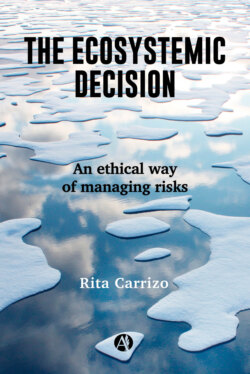Читать книгу The Ecosystemic Decision - Rita Carrizo - Страница 9
На сайте Литреса книга снята с продажи.
The economic man
ОглавлениеEconomics proposed the “Homo Oeconomicus” (HE) as the decisional model of the neoclassical perspective well over a century ago. As an archetype, it speaks of an individual whose characteristics define the way they make decisions. First and foremost, HE is concerned with always achieving the greatest monetary benefit -as a producer- or the greatest utility when satisfying their needs -as a consumer- with the least possible cost or effort. For example, they would never choose in favour of an alternative that implies high benefits but also a lot of effort and high costs, such as caring for the planet, for other humans, or for co-inhabiting species. Second, the way in which the HE seeks this maximum benefit, it is said, follows an individualistic line. Their decisions will thus always be oriented towards satisfying their own needs without being interested in satisfying group or social needs. The idea pursued by this model8 is that there is no one better than yourself to care about and strive for your own well-being, assuming that the welfare of society would be secured if all decision-makers sought to maximise utility at the lowest cost. Imagine, for a moment, the 1 billion people alive in the 19th century trying to maximise their well-being in this way, or whole groups of people or countries behaving like HE. How likely is it that everyone would succeed in this, assuming they did their best? What happens when the path of one HE crosses the path of another HE and then, if one of them maximises its utility at the least cost, the other will no longer be able to do so? How would this dilemma be resolved in terms of this theory? And, could HE consider these scenarios as dilemmas? Where does this leave the welfare of society and that of the global ecosystem, and how is it defined?
The two aspects described above provide the ideological or paradigmatic content of the model and, at the same time, lay the basis for explaining the rationality of the decision-maker and his or her ability to make correct decisions. They also seem to define a certain adaptive trait of success or failure because those who make a higher profit will be considered successful and will have a better chance of enduring. In this scenario, the dilemma mentioned above can hardly be present since choosing an alternative that is not geared towards achieving maximum individual benefit or that, instead of favouring the individual, would benefit others, would not be a rational decision with the power to ensure the success necessary to endure over time.
There are also other aspects that would enable HE to make perfectly rational decisions, such as a complete and consistent system of preferences in which the same alternatives have the same value for each individual. This means that any HE will always be able to choose from among the alternatives offered and that all are of equal value, regardless of who makes the choice; this decision-maker seems to have no doubts, let alone dilemmas. Furthermore, there is the not-insignificant fact that HE is perfectly aware of all possible options and has an infinite computational capacity to evaluate their complexity and choose the best one. Herbert Simon9 would say that this individual presents a preposterously omniscient rationality; I would also add that he or she comes from another planet since it would hardly describe a human being. As will be discussed in subsequent chapters, recent studies in neuroscience have shown that the human brain works in a way that precludes the rationality required for choosing the best alternative; not to mention the improbability of the brain ever knowing all the possibilities or having the capacity to process all of them, even with today’s technological assistance.
I have no doubt that, in the eyes of this archetype, the ecosystemic approach of this book will fall into the realm of irrationality. However, if we look at the information summarised at the beginning of this chapter when talking about the current state of the decision-maker and the ecosystem duo, we can now relate it to the actions of many HE -call them individuals, countries, societies, and so on- who, through poor “rational” and “correct” decisions in the pursuit of individual profit, have brought the ecosystem to its present state.
